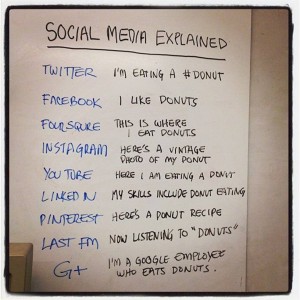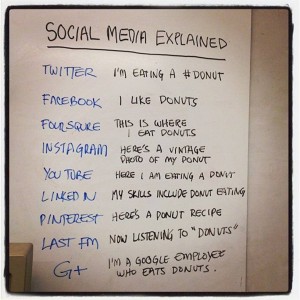How to Use Use Social Media as a B2B Sales Tool

In the B2B realm, social media has gotten a rather bad rap. Many are quick to dismiss a social media strategy as impractical for the industry or business category they fall into. They don’t think their customers are receptive to it, and thus see it as a waste of time.
In The Rise of Social Sales People, a study conducted by sales guru, Jim Keenan, defines the term “social selling”, as those that sell through social channels. According to the study, “social sellers have exceeded sales quotas by 10% higher than non-social media users every year since 2010”. Keenan also goes on to say that social selling is the closest thing to being a fly on the wall in your customers, prospects and competitor’s world. And I couldn’t agree more. When used correctly by individual members of a company’s sales team, social media can be a highly effective sales tool for a B2B company.
A well -established social media presence can provide companies and their sales teams with:
- A tool for gathering competitive and customer intelligence
- An easier means of prospecting with no geographic limitations
- Greater top-of-mind brand awareness
- A way to demonstrate subject matter expertise amongst individual team members
The first step to realizing these benefits is to start developing your social media presence. Use this list of best practices to get you started.
1. Be selective
Social media upkeep can take a lot of time and effort, so don’t spread yourself thin across too many platforms. Instead choose those that are a good “fit” for your business. Always start with Linkedin and Twitter – these platforms tend to be universally appropriate regardless of industry or company - then decide if you have the capacity to extend to other platforms. For example, if you are a company’s product offering is highly visual; a tool like Pinterest or Instagram may be a good fit. If customers require more instruction to understand your product offering, posting demo videos to a YouTube channel may work better.

2. Use the appropriate tone.
Learn the appropriate tone and style for each platform. LinkedIn tends to be more formal and professional, while the 140 character limit on Twitter leads to more informal, conversation-like engagement. The infographic to the right illustrates these differences using – believe it or not – a donut analogy. Stay tuned for my next post that will outline best practices specific to using both LinkedIn and Twitter.
3. Set a schedule.
Make social media part of your daily schedule to ensure that you maintain consistent activity on each platform. 15 – 20 minutes per day is a good rule of thumb, which can further be broken down into 7 – 10 minute intervals in the morning and afternoon. Engage with customers on Twitter in the morning Starbucks line, or read and post an article on LinkedIn on the train ride into work – the time commitment is more manageable than you may think!
Looking for more help to make marketing work in your B2B company? Get proven tips in PROFITGUIDE’s Special Report on The Radical Sales Shift.
.png?width=2361&height=488&name=Mezzanine%20Logo_Horiz_RGB_on%20blue%20(1).png)

